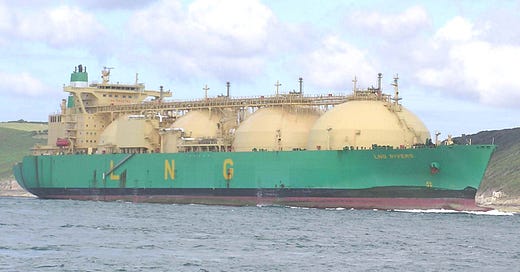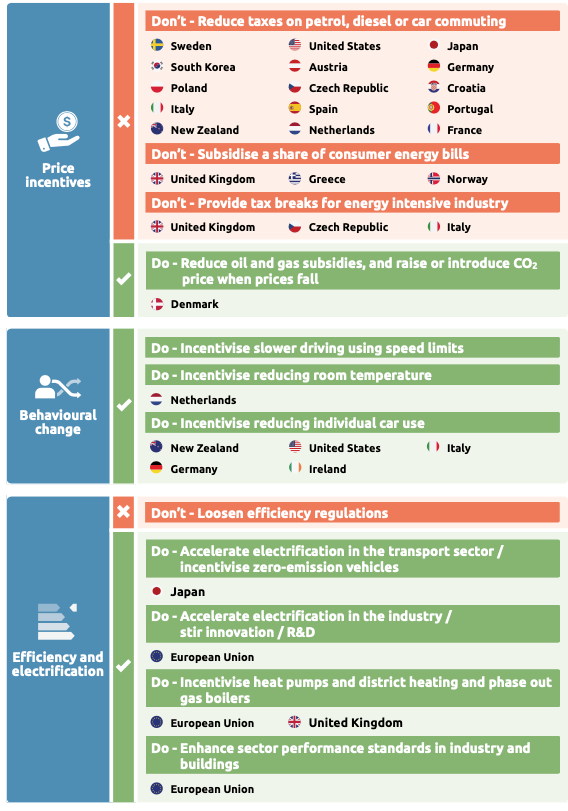6 minute read
Going down the wrong road
Back in March a couple of weeks after the Ukraine War started, I wrote:
“War is also the health of the fossil fuel energy complex . . . corks are popping in Houston at near record oil and gas prices that are exploding profits in what has been a financially troubled fossil fuel industry. They might even save the fracking industry, which has been a money-losing Ponzi scheme. Already fossil fuel executives and the politicians they own are using the war to argue for more public lands drilling and reversal of the Keystone XL pipeline cancellation. Of course, the hope is that the war has so underscored the folly of fossil fuel dependence it will cause a more rapid transition to clean energy. But a climate of war magnifies the voices of so-called ‘serious people’ and the status quo they represent, and that is fossil fuels.”
My worst fears are being realized. In a crisis atmosphere the “serious people” of the fossil fuel industry and their bought-and-paid-for politicians are gaining the upper hand, while clean energy options are for the most part being shunted to the side. A new report from Climate Action Tracker documents that governments are largely heading down the wrong road as far as the climate is concerned.
Says Climate Action Tracker (CAT): “The world is going through a major energy crisis as a result of Russia’s invasion of Ukraine. At the same time, the next few years are critical for climate action—a last chance to keep the 1.5°C temperature limit within reach.
“So far, governments have largely failed to seize their chance to rearrange their energy supplies away from fossil fuels. Instead, we are witnessing a global ‘gold rush’ for new fossil gas production, pipelines and liquefied natural gas (LNG) facilities. This risks locking us into another high-carbon decade and keeping the Paris Agreement’s 1.5°C limit out of reach.”
The graphic details
CAT tells the story with three infographics. The first depicts the “do’s and don’ts” of energy crisis response. The second two show what nations are actually doing. It’s not a pretty picture.
Committing the future to climate chaos
CAT cites the following moves to expand fossil gas production and infrastructure:
“New planned LNG import facilities in the EU—especially in Germany, Italy, Greece and the Netherlands—could supply a quarter more gas to the EU than before.
“Canada plans to fast track new LNG projects to increase exports.
“The US has signed a deal to export additional LNG to the EU. Qatar and Egypt have signed similar deals with Germany and Italy, respectively. Algeria has signed a deal to export additional gas via pipeline to Italy.
“In Africa, old gas pipeline projects are being revived (e.g. Nigeria) and countries with previously no fossil gas exports (e.g. Senegal) are now encouraged to supply gas to Europe.
“Domestic fossil fuel production has increased in the US, Canada, Norway, Italy and Japan, and new long-term import contracts are closed or extended in the UK, EU, Germany, Poland and Italy.”
Investing in new fossil fuel infrastructure “can lock in new greenhouse gas emissions for decades,” CAT says. That is as the world should already be reducing gas use to have a chance of holding within the 1.5-degree C global heating boundary, beyond which climate impacts escalate, as the group shows in this graphic:
CAT also notes, “LNG is far from being a low-emissions energy source. When considering emissions across the entire value chain, it could even have higher emissions than coal when used for power generation. In 2019, LNG represented 12% of total gas consumption but was responsible for around 17% of emissions linked to natural (sic) gas.”
At the same time, 10 European countries including Germany, Italy and France are considering pushing back their timetables for phasing out coal plants.
CO2 levels reach new milestone
This in coming even after the National Oceanic and Atmospheric Administration announced that carbon dioxide, which hovers in the air trapping heat, is now 50% greater than when humanity began mass fossil fuel burning in the 1700s.
“Prior to the Industrial Revolution, CO2 levels were consistently around 280 ppm for almost 6,000 years of human civilization,” NOAA reported. “Since then, humans have generated an estimated 1.5 trillion tons of CO2 pollution, much of which will continue to warm the atmosphere for thousands of years.”
Critically, as the graphic below shows, nearly three-quarters of that increase has taken place since the late 1950s, a little over six decades ago.
In fact, we’re back to CO2 concentrations seen over 4 million years ago. If CO2 remained at those levels for an extended period, we could see sea levels rise up to 80 feet, and temperatures 7 degrees Fahrenheit hotter than before humanity began the fossil fuel explosion. That is what the world looked like in that time, known as the Pliocene, when forests lined Arctic Ocean shores where tundra does today. This as CO2 concentrations are still growing around 2-3 ppm a year.
Clean energy moves falling short
The picture presented by CAT is not entirely bleak. As is visible from the above charts, European countries are taking steps to build up renewables and promote building and transportation electrification, while increasing building and industry energy efficiency. The European Commission proposes to increase the EU 2030 renewable energy goal from 40% to 45%. Japan is increasing incentives for low-emissions vehicles. But, notes CAT, “In most cases, however, this still falls short of the increase needed - or indeed what is possible.”
Though it focuses only on the U.S., a new study by scientists from major research institutes across the nation illuminates how far short. It is described by lead author John Bistline of the Electric Power Research Institute as “the first detailed roadmap for how the United States can reach its 50% greenhouse gas emissions-reduction target by 2030.”
The study finds that to provide a reasonable chance of staying within the 1.5 degree C boundary, the U.S. power grid must generate 80% of its energy from low-carbon sources by 2030. Most can come from wind and solar backed by storage. Also by 2030, the majority of new vehicles sold must be electric. With costs for those technologies dramatically decreasing, power costs will not increase, and EVs could actually save households $1,000 annually on average. Scientists conclude barriers are not economic, but in public policy. They point out the need for states and the federal government to coordinate policies to advance new energy technologies.
That underscores the opportunities being lost at the moment, when government policies are going down the wrong road, for the most part committing to increased investments in fossil fuel production and infrastructure. It is heartbreaking, but not surprising, considering the lock the “serious people” of the fossil fuel industry have on governments around the world.
Times of crisis reveal truths. One is that when it comes to energy, while political leaders may make good noises about renewables and efficiency, they take representatives of the fossil fuel industry most seriously. That has always been the case, as the lack of climate response proportionate to the scale of the crisis demonstrates. The war and the energy crisis it has spurred has only put this in sharp relief. We can’t trust the politicians. It is time for a people power uprising to turn this around, and give our children a fighting chance for a world with which they can cope.










This related report just came out. https://insideclimatenews.org/news/09062022/lng-exports-19-deals-war-in-ukraine/ All kinds of new LNG deals.
I would offer the counter-narrative that Putin's actions in the Ukraine have made it easier to attain the Paris accord agreements. In effect, Putin's actions have provided impetus to accelerate Europe's transition to renewables and to wean itself from dependency on Russian gas and oil. From what we are seeing now in the Ukraine, Putin's hold on power is the same as all petro-dictators in that it is a means to enrich oneself. Putin or his successors were never going to diplomatically relinquish the power that comes with controlling energy supply. Putin was never going to voluntarily accept the commitment required to reach 1.5C targets. Putin's actions have effectively moved forward the timeline for when the world needed to address recalcitrant players who would never commit to any meaningful action on CO2. Russia is isolated now, which makes it much easier to apply further economic and political pressure to decarbonize.